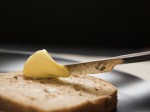 The gruesome images of rotting teeth and diseased lungs is convincing teenagers that smoking is no longer cool,particularly for girls.
The gruesome images of rotting teeth and diseased lungs is convincing teenagers that smoking is no longer cool,particularly for girls.
Research is showing that teenagers are more motivated by seeing the superficial effects of smoking on the human body than hearing messages about their long-term health.1
Teenage smoking is declining
A recent report by ASH (Action on smoking and health) has noted that in 1999, 29% of Year 10 students (14 – 15 year olds) claimed to smoke regularly (i.e. daily, weekly or monthly) but this has now fallen to 8 percent.
Younger children are still at risk.
ASH also reported that 2000 children under the age of 10 years try cigarettes for the first time each year.
It is estimated that 23% of children grow up in New Zealand with a mother who smokes2 and children who grow up with one parent who smokes are twice as likely to take up smoking themselves and seven times more likely to do this if both parents smoke2.
The nutritional implications
Growth rate is slower
During pregnancy a smoking mother increases the risk of her baby being born prematurely and of low birth weight. This is because the carbon monoxide in tobacco smoke binds with the haemoglobin (a protein in red blood cells) reducing the oxygen carrying capacity of the blood entering the placenta3.
Premature babies are at greater risk of suffering from growth and mental retardation, cerebral palsy and even death. Smoking also increases the possibility of complications developing during delivery such as excessive bleeding and fetal distress necessitating a caesarean delivery.
Breast milk deteriorates
When breastfeeding nicotine and cotinine are transferred into the breast milk of a smoking mother within 6-7 hours after smoking4.
The nutritional effects of this are great and may include:
- Reduced breast milk production and infant weight gain.
- Lower breast milk levels of antioxidants vitamins C and E3
- Lower fat levels in milk, important for growth and mental development3
- Lower iodine levels important for mental development5
- Higher cadmium resulting in lower levels of metallothionein. This is important for the metabolism of copper and zinc that aid height growth6
- Higher levels for orotic acid which may affect DNA synthesis and liver function7
Despite these factors when smoking mothers choose to breast feed they offer their infants more protection against respiratory illness and decrease academic performance compared to bottle feeding.8
Early weaning
Studies of smoking mothers have found that they are more likely to wean their babies earlier than non-smokers. This can increase the risk of childhood obesity.9
Colic
Studies have found that the prevalence of colic was two times higher among infants of smoking mothers, but this was less if those infants were exclusively breastfed.10
Affects on bone health
Smoking increases the requirements for vitamin C by 50%. It also deletes iron, B group vitamins and antioxidants. The function of antioxidants is to prevent free radical damage to cells and organs. Nicotine and free radicals affect bone health in the following ways:
- Hormone balance affecting bone status is upset. The hormone Cortisol increases, leading to bone breakdown while the hormone Calcitonin declines ,slowing bone growth.
- Nicotine kills the osteoblasts that make bone cells.
- Smoking damages the blood vessels slowing the supply of oxygen in the blood. This means that fractures are slower to heal and the nerves to the toes and feet can be damaged increasing the likelihood of falls.11
Weight control issues
Nicotine increases resting metabolic rate and is an appetite suppressant.12 It is estimated that smoking may increase energy expenditure by as much as 10% over a day, which equates to around 200 calories13. When people give up smoking they often gain weight as their metabolic rate returns to normal and appetite increases. Dietitians can help people who are trying to quit without weight gain.
Second hand smoke and young children
There are at least 250 chemicals in second-hand smoke that are known to cause cancer2. The toxins from cigarettes are more highly concentrated in side stream smoke (the smoke released from the burning end of a cigarette) than mainstream smoke (the smoke breathed out from the smoker).2
The smaller lungs and lighter weight of young children increases their vulnerability to the harmful effects of second-hand smoke. Breathing in smoke produced by others is known as “passive smoking”. In young children this can increase the risk of:
- Middle-ear infections (including glue ear)2
- Lower respiratory illnesses (including croup, bronchitis and pneumonia) particularly in children 0 – 2 years.
- The onset of asthma and worsening of asthmatic symptoms up to the age of 15 years but the effects are greatest in pre-school children. This may be due to impairment of airway growth during utero and postnatally as a result of irritation of their airways.2
- Reduced lung growth2
- Sudden infant death syndrome (SIDS, or cot death)14
Around 5000 people die each year in New Zealand because of smoking and “passive smoking”. That’s around 13 people a day.
Recommendations to reduce the detrimental effects of smoking on children
- Women should stop smoking before having children.
- If breastfeeding women want to give up then nicotine patches can help so discuss this with your doctor15
- If quitting is not possible then mothers should prolong the time between the last cigarette smoked and breastfeeding to minimize the exposure, switch to nicotine patches, smoke outside the house and avoid smoky environments.9
- Breastfeeding is recommended over bottle feeding for infants with mothers who smoke
- Smoking drains the body of many essential vitamins and minerals particularly those such as Vitamins C and E with antioxidant properties. Respiratory function can be improved when children are fed fresh fruit and vegetables each day and have a regular consumption of fish.
- No amount of supplementation with Vitamin C or antioxidants will make up for the damage of smoking. The only real solution is to quit smoking.
If you or other family members smoke and you would like to know more about the nutritional implications of this then contact us today.
References:
- Hill. M Ugly truth sends teens smoke signal. Sunday star times Nov 4, 2012 pg A3
- Woodward A, Laugeson M, Morbidity attributable to second-hand cigarette smoke in New Zealand. Report to the Ministry of Health March 2001.
- Amir LH. Maternal smoking and reduced duration of breastfeeding: a review of possible mechanisms. Early Hum Dev. 2001 Aug (cited 2012 Feb 16):64(1):45-67.
- Dahlstrom A, Ebersjo C, Lundell B. Nicotine exposure in breastfed infants Acta Paeiatrica. 2004 Ju:93(6):810-16
- LaurbergP, Nohr SB., PedersenKM, Fuglsang E. Iodine nutrition in breastfed infants is impaired by maternal smoking. J Clin Endocrinol Metab.2004 Jan:89(1)181-7
- Milnerowicz H, Chmarek M Influence of smoking on metallothionein level and other proteins ringing essential metals inhuman milk, Act Paediatr. 2005 Apr:94 (4):402-6
- Karatas F. An investigation of oraotic acid levels in breastmilk of smoking and non-smoking mothers. Eur J CLin Nutr. 2002 Oct:56(10):958-60.
- American Academy of Pediatrics, Committee on Drugs. The transfer of drugs and other chemical into human milk. Pediatrics. 2001 Sep:108(3):776-89.
- Monasta L, Batty G, Cattaneo A, Lutje V, Ronfani L, Van Lenthe FJ, Brug J. Early-life determinants of overweight and obesity: a review of systematic reviews. Obes Rev. 2010 Oct 11(10):695-708
- Reijneveld SA, Brugman E, Hirasing RA, Infantile colic; Maternal smoking as potential risk factor. Arch Dis child. 2000 Oct (cited 2012 Feb 17); 83(4) : 302-3.
- Osteoporosis: the effect of smoking on bone health. www.webmd.com/osteoporosis/living-with-osteoporosis-7/smoking
- Seeley Rj, Sandoval DA, Neuroscience;weight loss through smoking. Nature 2011;475(7355):176-7
- Durain-McGovernJ, benowitz NL. Cigarette smoking, nicotine and body weight. Clin Pharmacol Ther 2011;90(1):164-8
- Mithcell EA, Scragg L, Clements M. Location of smoking and the sudden infant death syndrome (SIDS). Aust NZ J Med 1995; 25:155-56.
- Illett K.F, Hale TW, Page-Sharp M, Kristensen JH, Kohan R, Hackett LP. Use of nicotine patches in breastfeeding mothers: transfer of nicotine and cotinine into human milk. Clin Pharmacol Ther. 2003 Dec (cited 2012 Feb 16); 74(6):516-24.
- Antova T, Pattenden S, Nikifarov B, Leonardi GS, Boeva B, Fletcher T, Rudnai P, Slachtova H, Tabak C, Ziotkowska R, Houthujs D, Brunekreef B, Holiova J. Nutrition and respiratory health in children in six Central and Eastern European countries. Thorax 2003:58:231-236 doi 1136/thorax.58.3.231




















Leave a Reply